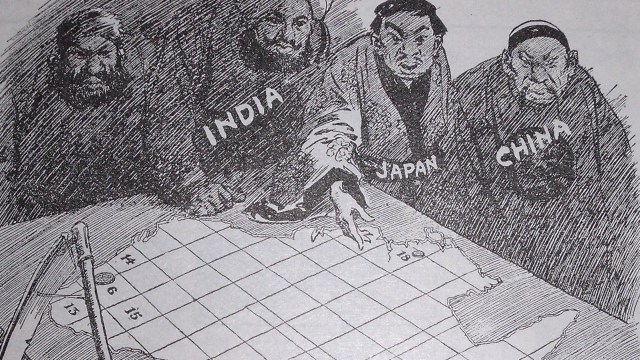403 – Regional Political Mentalities in Switzerland

n
Safe, neutral, boring Switzerland is a strangely fertile source of curious cartography. Previously, this blog has zoomed in on wartime contingency plans for a Schweizer réduit (#109), Jules Verne’s fictional New Switzerland (#133), the Swiss/German enclave of Büsingen am Hochrhein (#235) and the geo-culinary phenomenon of the Röstigraben (#257).
n
That last post touches upon the fact that the different language communities within Switzerland also have distinct political mentalities – the French-Swiss supposedly having a more pro-European outlook, and the German-Swiss apparently less likely to support a stronger federal government. This map expands that little scrap of Swiss political geography into a full-blown cartogram of regional political mentalities in Switzerland.
n
A cartogram being a map morphed by non-geographic data, there is very little left of Switzerland’s familiar shape to recognise here. The confederation’s centuries-old cartographic persona is transformed by two axes, from liberal to conservative (north-south) and from left-wing to right-wing (east-west). The colours denote the country’s main language areas: German (green), French (red) and Italian (yellow)*. Higher altitude lines correspond with higher population density.
n
This Switzerland of regional political mentalities is an island that serendipitously looks like Verne’s aforementioned New Switzerland. It is also reminiscent of the Inglehart-Weltzel cultural map of the world (#127), which similarly rearranges the world’s countries along two axes of cultural values.
n
The French-Swiss area generally is more liberal and left-wing than the rest of Switzerland, but with significant internal diversity. The municipality of Collonge-Bellerive is among the most liberal in Switzerland, but is rather more right-wing than Geneva (marked in German as Genf) and Lausanne, the largest cities of la Suisse romande (French-Switzerland). And Delémont apparently is the hotbed par excellence of socialist agitation in Switzerland. Italian-Switzerland is equally left-wing, but not quite so liberal as the French-Swiss.
n
If one draws a line from the map’s “southwestern” to its “northeastern” corner, one notices that Deutschschweiz (German-Switzerland) takes up the entire conservative/right-wing half of the island. The only German-speaking areas outside of this half are the urban centres of Basel, Zürich, Bern, Luzern** and Sankt-Gallen. These are more liberal and left-wing than the rest of German-speaking Switzerland, but still more conservative and right-wing than French-speaking Switzerland. Urbanity therefore seems a good predictor of a preponderance of liberal and left-wing politics, while speaking German on average appears to predestine one to a more conservative and right-wing outlook.
n
Thus, on the axis of Swiss political mentalities, super-conservative Unteriberg is the mirror-image of ultra-liberal Collonge-Bellerive, and right-wing Küsnacht is just about as far away on the political spectrum as one can get from left-wing Delémont.
n
This map of regional political mentalities also name-checks some political toponyms unlikely to show up on a regular map, such as the Arc Lémanique (the “Lémannic Arc”), i.e. the most liberal area of French-Switzerland, on the Lac Léman, and the Zürcher Goldküste (the “Zurich Gold Coast”), an equally liberal, but more right-wing area in German-Switzerland.
n
Many thanks to Marcel Bieler for sending in this map, found here on www.sotomo.ch, a Swiss website on political geography.
n
——
n
* German: 64%, French: 20%, Italian: 6.5%. The fourth national language, Rhaeto-Romance (0,5%) apparently is too irrelevant to be represented here.
n
** Luzern (without Umlaut) in German, Lucerne in English (and French)
n





